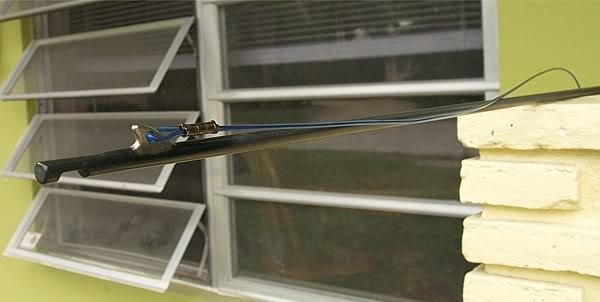I've been reading a few times now how people are saying that the RA shafts are more bend resistant than all others. Also they are made in 7.5mm diameter, this I've been wanting to try for a long time as I find the 9/32 shaft flimsy and the 5/16 heavy. The problem is that I really like my American mech hip loading wood speargun and don't want to change to a pipe gun.
I asked around a little and no one makes a 7.5mm shaft for an American mech. Since the RA shaft has the diameter that I'm looking for plus it is said to be a stronger shaft all around, it makes sense to me to try and modify it.
I think it is within my capabilities to work the rear of the shaft to the same specs as an American shaft. I could probably treat it in some way afterwards to avoid corrosion in that area.
The difficult part is welding the sharkfin tab on. I could get away with one tab also using it as the line anchoring point. It would be great if RA would manufacture them but it appears that they don't. Would it be possible to weld on these tabs?
A description of the RA shafts.
QuoteRailgun shafts are engineered from ultra tough oil-quenched carbon spring steel. Highly durable tri-cut tips ensure efficient penetration. Once ground and polished, the shafts are zinc plated to combat corrosion.


